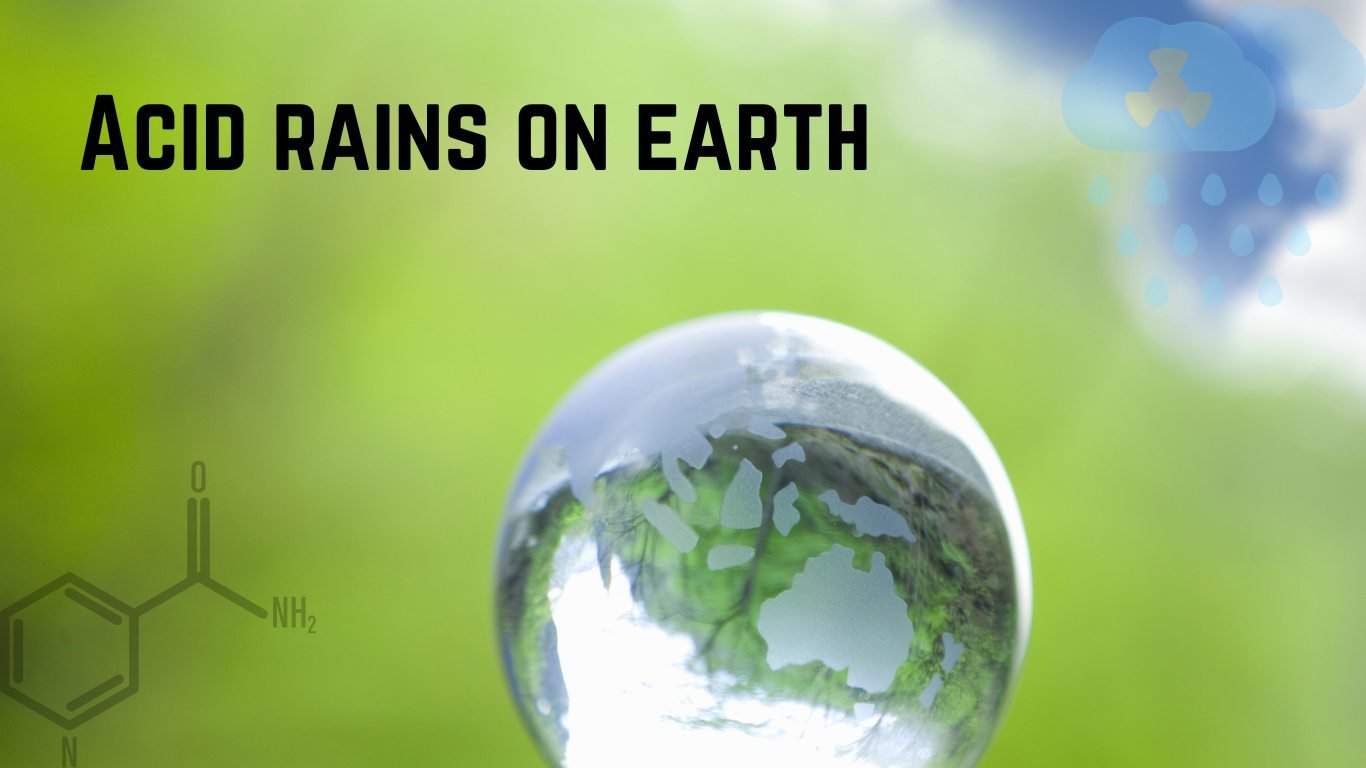Acid Rains on Earth: Causes, Effects, and Solutions
Vikash Jain
. 4 min read
Acid rain is a type of precipitation that contains high levels of sulfuric and nitric acids. These acids are formed when sulfur dioxide and nitrogen oxides, which are produced by the burning of fossil fuels, react with the water in the atmosphere. When acid rain falls to the ground, it can have a number of negative impacts on the environment, including the acidification of lakes and streams, the damage of forests and crops, and the corrosion of buildings and other structures. Acid rain can also have negative impacts on human health, as it can irritate the skin, eyes, and respiratory system.

The Formation Process of Acid Rain
Acid rain is the result of emissions of sulfur dioxide (SO2) and nitrogen oxides (NOX) into the atmosphere, which are then carried through the atmosphere by wind and other air currents. The formation of sulfuric and nitric acids is caused by the reaction of SO2 and NOX with water, oxygen, and other chemicals. After that, they combine with water and various other substances before eventually falling to the ground. When released into the atmosphere, sulfur dioxide, like nitrogen dioxide, has the potential to cause the formation of secondary pollutants such as sulfate aerosols, particulate matter, and acid rain.
Causes of Acid Rain
Both natural and man-made factors can contribute to the formation of acid rain. Acid rain can be caused by both the activity of volcanoes and the breakdown of plant matter, which releases gases into the atmosphere. On the other hand, the vast majority of gases originate from human activities, such as the burning of fossil fuels. The generation of electricity from the burning of fossil fuels is responsible for the release of approximately two thirds of the sulfur dioxide and one quarter of the nitrogen oxides that are found in the atmosphere in the United States. Both of these gases are also released into the air by the exhaust of vehicles, so the greater the number of vehicles, the greater the risk of acid rain.
Effects of Acid Rain on the Environment and Human Health
Acid rain can have a number of negative effects on the environment and on human health. Some of the effects of acid rain include:
Acidification of lakes and streams: Acid rain can lower the pH of bodies of water, making them more acidic. This can harm aquatic life by disrupting the balance of nutrients in the water and reducing the availability of certain minerals.
Damage to forests and crops: Acid rain can damage the leaves of trees and other plants, causing them to lose their ability to photosynthesize and grow. It can also leach nutrients from the soil, making it less fertile.
Corrosion of buildings and other structures: Acid rain can corrode metal surfaces, such as the roofs and gutters of buildings, bridges, and statues.
Adverse effects on human health: Acid rain can irritate the skin, eyes, and respiratory system, and can exacerbate existing health problems such as asthma.
Decrease in biodiversity: Acid rain can have negative impacts on the overall diversity of plant and animal life in an ecosystem.
Efforts to reduce acid rain, such as the implementation of stricter emissions controls on power plants and vehicles, have been successful in some parts of the world. However, the problem persists in many areas, and the effects of acid rain continue to be a concern.
Impacts of Acid Rain on Man-Made Structures:
Deposition of acid can also have an effect on man-made structures. The effects are most noticeable on marble and limestone, both of which are frequently used construction materials and can be found in a variety of historic buildings, monuments, and gravestones. In the presence of water, sulfur dioxide can react directly with limestone to produce gypsum. Over time, this gypsum will either flake off or be dissolved by the water. Sulfur dioxide is a precursor to acid rain. In addition, limestone and marble that comes into direct contact with acid rain can be dissolved by the rain.
Preventing Acid Rain: Strategies and Solutions
There are several measures that can be taken to prevent or reduce the formation of acid rain:
Reduce the use of fossil fuels: Burning fossil fuels such as coal, oil, and natural gas releases sulfur dioxide and nitrogen oxides into the atmosphere, which can contribute to the formation of acid rain. Reducing our reliance on fossil fuels can help to decrease the amount of these pollutants that are released.
Implement stricter emissions controls: Installing scrubbers on power plant smokestacks and implementing stricter emissions standards for vehicles can help to reduce the amount of sulfur dioxide and nitrogen oxides that are released into the atmosphere.
Plant trees and other vegetation: Trees and other plants can absorb and filter pollutants, including those that contribute to acid rain. Planting more trees and vegetation can help to mitigate the effects of acid rain.
Promote the use of clean energy sources: Using clean energy sources such as solar and wind power can help to reduce the amount of fossil fuels that are burned, which in turn can help to reduce the formation of acid rain.
Educate the public: Raising awareness about the causes and effects of acid rain can help to encourage individuals and communities to take action to reduce their own contributions to the problem.
Conclusion of Acid Rain and its connection to Renewable Energy
Acid rain is a general phrase that refers to any type of precipitation that contains acidic components, such as sulfuric or nitric acid, and falls to the ground in wet or dry form from the atmosphere. Acid deposition is another name for acid rain. Acid rain can also be referred to as acid deposition. Generation of electricity that does not rely on the use of fossil fuels is an excellent strategy for preventing acid rain. There is still potential for the use of renewable energy sources such as solar and wind power. Renewable energy sources contribute to the reduction of acid rain as a result of the significantly lower levels of pollution that they emit.
More Stories from
Benefits of Manure in Agriculture and its Impact on Soil Fertility and Environment
This article discusses the different types of manure and their benefits as a source of organic fertilizer for agriculture.
Unveiling India's Volcanic Secrets: A Geological Overview
Explore India's unique volcanic history and the enduring forces of nature that continue to captivate scientists and adventurers alike.
Zero-Waste Living: Practical Tips for Reducing Environmental Impact
Discover the power of zero-waste living as this article offers practical tips and actionable advice for reducing your environmental impact.
Eco-Friendly Practices: How Individuals and Businesses Can Make a Difference
Discover the Power of Eco-Friendly Practices: Learn how individuals and businesses can contribute to a greener world by adopting sustainable measures.









.png?width=40&aspect_ratio=1:1)


.png?width=40&aspect_ratio=1:1)